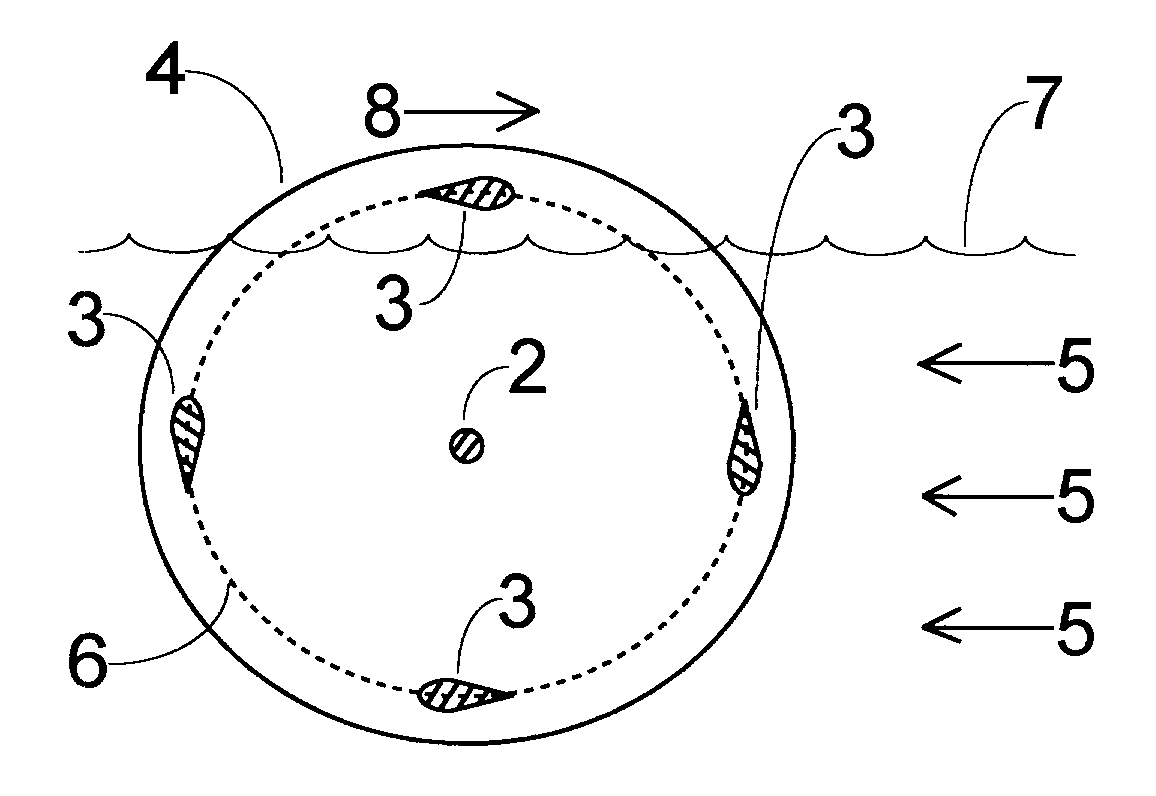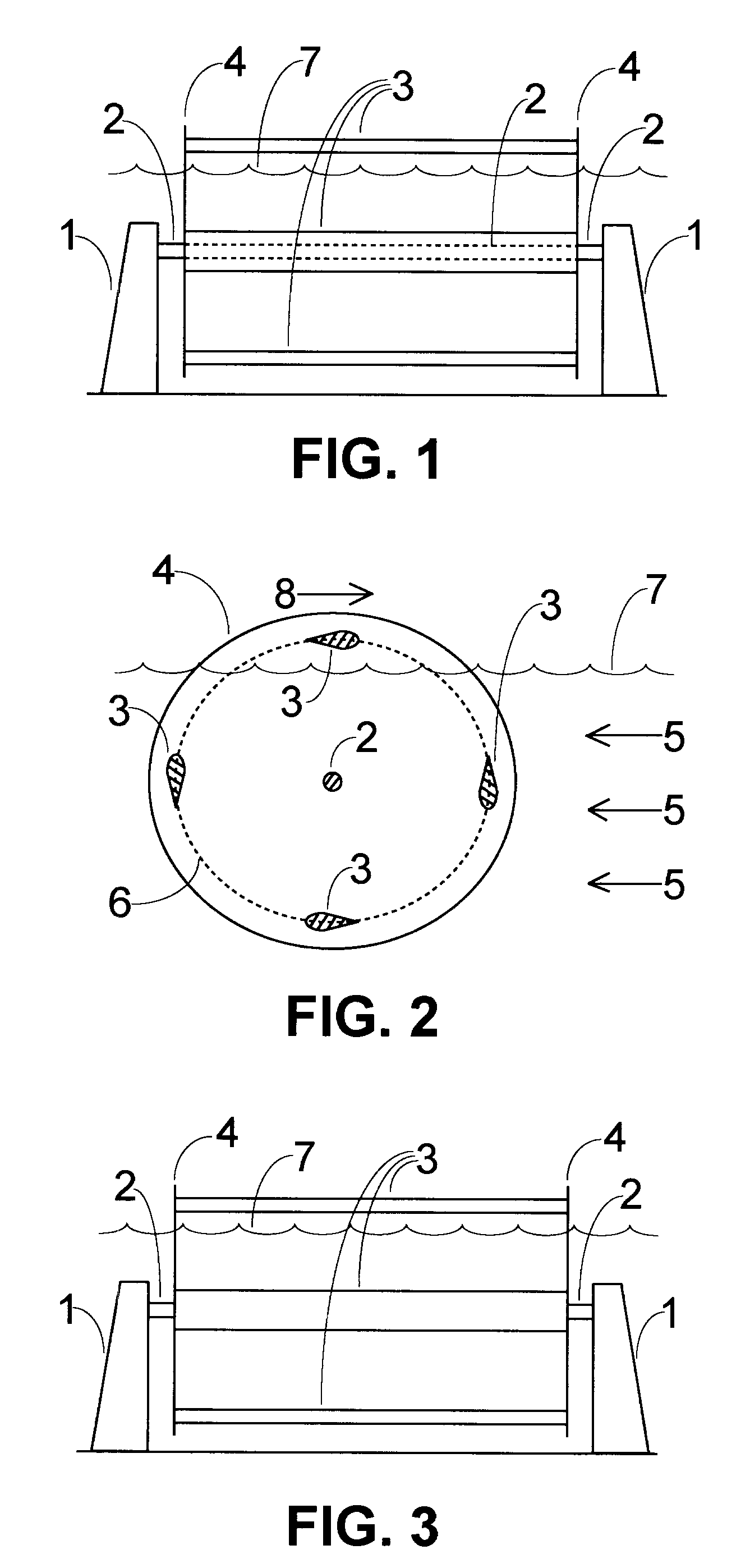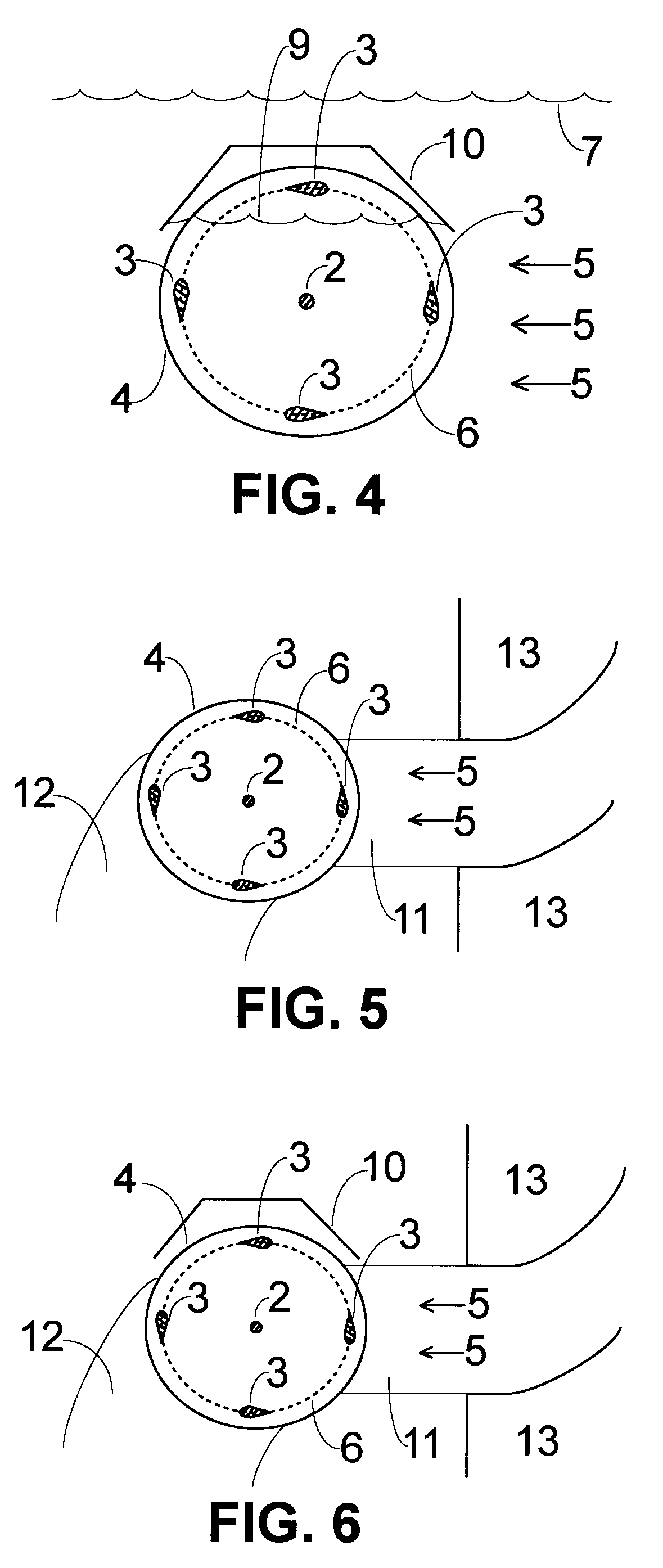Darrieus water wheel turbine
a technology of water wheel turbine and turbine blade, which is applied in the direction of motors, electrical equipment, control systems, etc., can solve the problems of increasing flow turbulence, increasing cost and complexity, and reducing energy conversion efficiency, so as to reduce system stress, increase energy output, and be easily scalable
- Summary
- Abstract
- Description
- Claims
- Application Information
AI Technical Summary
Benefits of technology
Problems solved by technology
Method used
Image
Examples
Embodiment Construction
[0025]FIG. 1 is a frontal view down the direction of water flow for the best embodiment of the invention. Shaft supports 1 elevate a shaft 2 and permit its rotation. The longitudinal axis of the shaft 2 is horizontal and perpendicular to the direction of water flow. Attached to the shaft are two blade support members 4, each one being either a disc, radial spokes or any other blade support mechanism known in the art. A set of wing-like airfoil blades 3 extend between the blade support members 4. Each blade 3 has a long rectangular profile between the two blade support members 4 and a constant teardrop airfoil cross-section along its longitudinal axis, as shown in FIG. 2. A blade 3 can be constructed from a solid and non-flexible material such as metal, aluminum or reinforced polymer. The water flowing past each blade 3 creates lift and some drag, causing the blade support members 4 to rotate. The shaft 2, which passes through the centre of each blade support member 4, is thereby rot...
PUM
 Login to View More
Login to View More Abstract
Description
Claims
Application Information
 Login to View More
Login to View More - R&D
- Intellectual Property
- Life Sciences
- Materials
- Tech Scout
- Unparalleled Data Quality
- Higher Quality Content
- 60% Fewer Hallucinations
Browse by: Latest US Patents, China's latest patents, Technical Efficacy Thesaurus, Application Domain, Technology Topic, Popular Technical Reports.
© 2025 PatSnap. All rights reserved.Legal|Privacy policy|Modern Slavery Act Transparency Statement|Sitemap|About US| Contact US: help@patsnap.com



